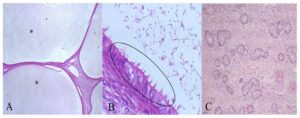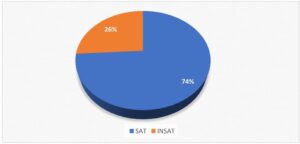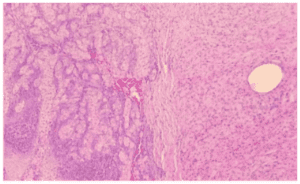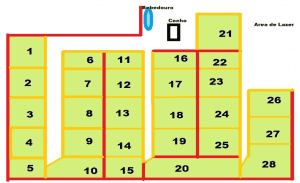ORIGINAL ARTICLE
OLIVEIRA, Wanessa Noadya Ketruy de [1], SANTANA, Anderson Gabriel Farias de [2], BARROS, Maria Edna Gomes de [3], MORAIS, Renato Souto Maior Muniz de [4], PEREIRA, Iza Jamile Moreira Vilar [5], SILVA, Alex Laurindo da [6], BANDEIRA, Jéssica de Torres [7], ROCHA, Priscilla Maria Cavalcante [8], SOUZA, Francisco de Assis Leite [9], EVÊNCIO-NETO, Joaquim [10]
OLIVEIRA, Wanessa Noadya Ketruy de et al. Influence of neonatal feeding on zootechnical and economic aspects of the initial production of broiler chickens. Revista Científica Multidisciplinar Núcleo do Conhecimento. Year 09, Ed. 12, Vol. 01, pp. 121-133. September 2024. ISSN: 2448-0959, Acess link: https://www.nucleodoconhecimento.com.br/veterinaria-en/production-of-broiler-chickens, DOI: 10.32749/nucleodoconhecimento.com.br/veterinaria-en/production-of-broiler-chickens
ABSTRACT
The aim of the present study was to evaluate the influence of neonatal feeding on zootechnical and economic aspects of the initial production of broiler chickens. A total of 320 Cobb-500 male chicks were used. After vaccination, the neonatal hydrating feed was added to the transport box. Four control groups were formed (A to D) with chicks 8, 24, 48 and 72 hours after hatching without neonatal feeding and four experimental groups were formed (E to H) with chicks lodged 8, 24, 48 and 72 hours after hatching with neonatal feeding. The hydrating supplement demonstrated dehydration of the chicks. Group E had an initial body weight gain of 1.88% associated with a shorter post-hatch lodging interval. At seven days of age, the chicks in Group F, which received neonatal feeding, were an average of 15.31 g above the expected weight. Based on yield rates at seven and 14 days, the average live chicken gross margin and average carcass gross margin were positive in birds that received neonatal nutrition. Neonatal supplementation offers a financial benefit by enhancing animal wellbeing and contributing to an increase production profit.
Key-words: Post-hatch nutrition, Economic gain, Poultry.
1. INTRODUCTION
In 2022 Brazil produced 14,524 millions tons of chicken meat, becoming second largest producer in the world (1). Despite this large quantity, some factors lead to losses in yield, such as prolonged fasting. Twenty to thirty percents of chicks are hatched 12 hours prior to the onset of removal from the incubator. When considering the time and access to initial feeding on the ranch, the actual duration of fasting is even longer (2). In such cases, the In reserves of the yolk sac are used for nutritive purposes.
Animal production has been adapting to the growing demands of the market. This has raised concerns over the conditions in which animals are reared and implications with regards to the quality of the end product (3). The survival and performance of poultry depend on the adequate obtainment of energy and chemical compounds by the organism. For this to occur, the digestive tract must have functional structures from the ingestion of feed to its absorption (4).
The neonatal phase is an opportunity to generate zootechnical and health gains that can last throughout the entire production cycle (5). Therefore, the aim of the present study was to investigate the influence of neonatal feeding on zootechnical and economic aspects of the initial production of broilers chickens.
2. MATERIALS AND METHODS
This experiment received approval from the Animal Use Ethics Committee of Universidade Federal Rural de Pernambuco (UFRPE) (license number: 74/2018) and was part of part of the thesis entitled “effect of hydrating feeding on the development of the gastrointestinal tract of neonatal broiler chickens submitted or not to a period of post-hatchting fasting”.
It was developed in two steps: 1- post-hatch period conducted in a commercial incubator; 2- initial rearing phase on a private property (Brejo Santo ranch) in the municipality of Garanhuns, state of Pernambuco, Brazil. The post-hatch experiment was conducted with 320 male chicks from Cobb-500-line matrices 45 weeks of age. The chicks then remained in the vaccination waiting room and received a vaccinal solution for Marek, Gumboro and Newcastle diseases in a single dose.
Immediately after vaccination, the hydrating neonatal supplement was added to the transport box of the treated groups. For such, a natural isotonic solution was used that contained electrolytes to ensure hydration and energy, a protein source to avoid muscle loss and a natural additive to improve the performance of the intestinal tract. The following groups were formed (Table 1).
The chicks were lodged in eight experimental boxes measuring 1.5 m2, with 40 chicks in each box (density: 26 chicks/m²). The chicks were placed on a new bedding (first lot) with free access to water and feed and submitted to 24 hours of light per day until the seventh day of age and 23 hours of light per day from the eighth to the 14th days of age. The birds were distributed in an entirely randomized experimental design. Two types of commercial feed were offered: bran based and isocaloric (Tab. 2 and 3). The nutritional levels of the feeds were in accordance with those normally used in the market (6) for the different phases of development [pre-initial phase (1st to 7th days of age) and initial phase (8th to 14th days of age)].
Table 1: Groups of chicks submitted to fasting and neonatal feeding 8, 24, 48 and 72 hours after hatching

Table 2: Composition of commercial pre-initial feed (1 to 7 days of age)
| Levels per kg of product | |
| Moisture (max.) | 12.50% |
| Crude protein (min.) | 23.00% |
| Ether extract (min.) | 4.00% |
| Fibrous matter (max.) | 6.00% |
| Mineral matter (max.) | 9.00% |
| Calcium (max.) | 1.30% |
| Phosphorus (min.) | 0.65% |
Source: personal archive, 2024.
Composition/ kg of product: Ground whole corn, corn gluten bran 60, soy bran, meat and bone flour, degummed soybean oil, calcium (min.) 7500 mg, calcium (max.) 14 g, phosphorus (min.) 5500 mg, lysine (min.) 12.5g, methionine (min.) 5500 mg, sodium (min.) 2500 mg, iron (min.) 40 mg, copper (min.) 90 mg, manganese (min.) 80 mg, zinc (min.) 90 mg, iodine (min.) 1.7 mg, selenium (min.) 0.35 mg, vitamin A (min.) 9500 UI, vitamin D3 (min.) 3400 UI, vitamin E (min.) 22 UI, vitamin K3 (min.) 1.5 mg, vitamin B1 (min.) 2 mg, vitamin B2 (min.) 7.2 mg, vitamin B6 (min.) 3 mg, vitamin B12 (min.) 18 mg, niacin (min.) 48 mg, calcium pantothenate (min.) 12 mg, folic acid (min.) 1.2 mg, biotin (min.) 0.08 mg, choline chloride (min.) 1550 mg, diclazuril (min.) 1mg, zinc bacitracin (min.) 55 mg.
Table 3: Composition of initial commercial feed (8 to 14 days of age)
| Levels per kg of product | |
| Macro | |
| Ground corn | 607.1600 |
| Soybean flour | 147.000 |
| Extruded soy | 137.000 |
| Meat flour | 51.000 |
| Gross limestone | 3.000 |
| Micro | |
| Salt | 1.9600 |
| Sodium bicarbonate | 2.1900 |
| Dl- methionine | 3.8900 |
| L- lysine | 3.9200 |
| L- threonine | 1.5000 |
| Initial ProAct | 0.2000 |
| Hiphos | 0.0500 |
| Histarch | 0.1300 |
| Biobond | 2.0000 |
| Pre-Initial FC SM3Kg | 3.0000 |
Source: personal archive, 2024.
All chicks in the different treatments and repetitions were weighed on a Filizola® electronic scale with a capacity of 15 kg and precision of 5 g at the time of lodging (8, 24, 48 and 72 hours after hatching). The values were used to calculate weight loss between hatching and lodging. The birds were also weighed at seven and 14 days of age for the determination of feed consumption, weight gain and feed conversion. Data on mortality were recorded daily. The mortality rate was used to calculate the percentage of viability between one and seven days as well as between one and 14 days. The study of the economic results was performed using the calculator of the Ceva Animal Health Lab – Ceva CostBenefitCalculator (7).
3. RESULTS AND DISCUSSION
The initial weight of the animals at the time of lodging diminished with the increase of the time in which the chicks remained in the transport box (Table 4). A similar finding was observed for the percentage of weight loss from hatching to lodging. Initial weight loss was approximately 10.16% among the chicks in the control group and 5.6% among those that received the supplementation for 48 h after hatching. Previous studies report weight loss rates of 10% (8) to 21% (9) in chicks between hatching and lodging at 48 hours.
Table 4: Average performance of broiler chicks in pre-initial phase (1-7 days) in different treatments
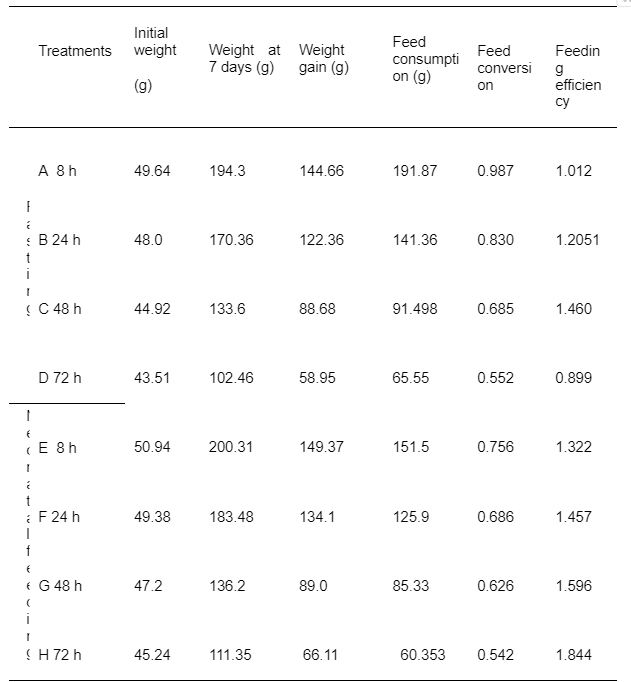
The reduction in initial weight is associated with a reduction in quality (10). The hydrating supplement used in the present study was able to attenuate the dehydration of the chicks, resulting in less loss of initial weight. This finding is of considerable relevance when analyzing the chicks in Group E, which had a gain of 1.88% in initial weight associated with a shorter interval between hatching and lodging.
A negative correlation was found (11), with a reduction of 0.08 g of live weight for every hour in which a chick is not fed, totaling a loss of 4.6 g of live weight between hatching and lodging after 52 hours, which explained the lower live weight of chicks at seven days of age that remained fasting for up to 52 hours. Similar results were found in the present study only in Group C (fasting for 48 hours after hatching), with the loss of 5.08 g of initial live weight. Production indices (initial weight, live weight, weight gain, mean feed consumption, feed conversion and feeding efficiency) are displayed in Tables 4 and 5 for one to seven days of age and eight to 14 days of age, respectively. During the pre-initial phase (1-7 days), the control groups had greater feed consumption but poorer feed conversion.
Table 5: Average performance of broiler chicks in pre-initial phase (8-14 days) in different treatments
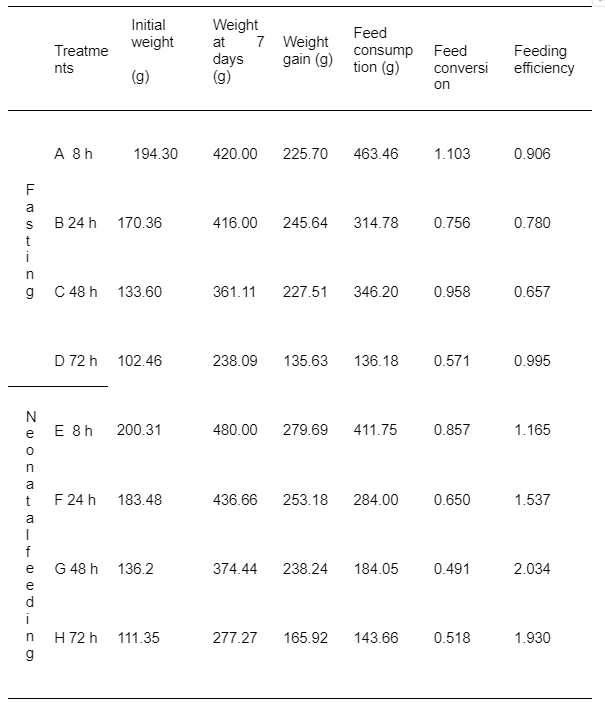
The chicks in Group E had better feed conversion results compared to those in Group A, less feed consumption as well as greater feed efficiency and more absolute weight. The benefits in terms of feed conversion denote better use of nutrients from the same quantity of feed. However, other possible benefits on the intestinal cellular level or in terms of enzyme activation cannot be discarded.
Weight at seven days of age of the chicks lodged eight hours after hatching was higher than that expected for the breed. For instance, the chicks in Group F, which received neonatal feeding, had an average of 15.31 g above the expected weight (11).
The results of the present study indicate that the adoption of a neonatal diet for broiler chicks submitted to transport 72 hours after hatching has benefits over programs that only introduce the diet after lodging. Analyzing the groups separately within each post-hatch lodging interval, weight gain at seven days of age was proportionally lower as the period prior to lodging increased, especially in the chicks submitted to fasting, whereas this characteristic was less pronounced in the chicks that received neonatal feeding.
In the comparison of Groups D and H with regards to feed consumption, conversion and efficiency, Group H had a numerically better performance, with approximately 9 g more weight. Birds that consumed feed in the pre-lodging period had a better performance at seven days of life compared to those that remained without feed prior to lodging (12). In contrast, no significant difference was found in feed consumption or feed conversion among birds that consumed feed immediately after hatching, birds that consumed only cornmeal and bird that remained fasting for 12 and 14 hours (13).
Similar results were found in the initial rearing phase (8 to 14 days). The neonatal feeding program improved the performance of the broiler chicks at 14 days of age. The chicks in Group E had an average weight above that expected for the breed, whereas the chicks in Group A had an average weight 50 g below that established for this phase of broilers. These findings are in agreement with data described in (13), in which greater weight was found at 2, 7 and 14 days in chicks that consumed a pre-lodging diet in all groups analyzed when compared to those that remained fasting.
When physiological development and neonatal microbial colonization are delayed, zootechnical parameters are negatively affected throughout the rest of the productive cycle (14). Besides reducing productive performance, the delay also exerts a negative impact on the formation and maturation of the immune system, compromising the capacity of birds to defend against pathogens and respond to vaccination programs. In this scenario, post-hatch feeding programs emerge as tools that are easy to implant and enable optimizing productive and health-related results.
Based on yield rates at seven and 14 days (Table 6), the average gross margin of live chickens and carcasses gross margin were positive in the birds that received neonatal nutrition, with the economically most attractive results obtained at seven days of production. This finding is mainly due to the better productive efficiency of the birds, lower feed consumption and better feed conversion.
Table 6: Revenue with sales of one thousand chicks 7 and 14 days of life considering different treatments
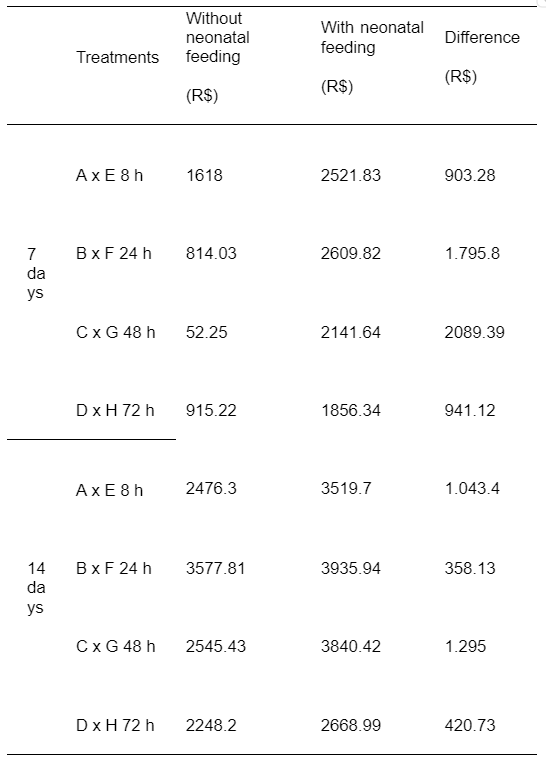
Neonatal supplementation offers economic benefits, enhancing animal wellbeing and contributing to profits obtained with production. For incubating facilities, the use of neonatal nutrition is of the utmost importance and can be a differentiating point in the commercialization of one-day-old chicks of high quality for broiler producers seeking chicks with high growth potential, leading to a higher yield at the end of the rearing period (15).
4. CONCLUSIONS
The use of hydrating neonatal feeding in transport boxes for chicks that will be lodged in up to 72 hours after hatching provides greater efficiency in processes consolidated in the market.
ACKNOWLEDGMENT
This study was financed in part by the Coordenação de Aperfeiçoamento de Pessoal de Nível Superior – Brasil (CAPES) – Finance Code 001.
REFERENCES
1 – Associação Brasileira De Proteína Animal. Relatório Anual 2023. Available from: https://abpa-br.org/abpa-relatorio-anual/.
2 – Suzuki T, Noguchi J, Kitamura M, Fujisaki H. Effects of a newly developed early post-hatch feed for poultry hatching on the performance of poultry. The Journal of Poultry Science. 2008;45:39-45. (https://www.jstage.jst.go.jp/article/jpsa/45/1/45_45_39/_pdf/-char/en)
3 – Holemans MS, Vries S, Lammers U, Cloward C. Efeitos da nutrição precoce e do transporte de frangos de um dia sobre o desempenho produtivo e resposta ao medo. Poultry Science. 2018;97:2534-2542.
4 – Boleli IC, Maiorka A, Macari M. Estrutura Funcional Do Trato Digestório. In: Macari M, Furlan RL, Gonzales E. Fisiologia Aviária Aplicada a Frangos de Corte. 2.ed. Jaboticabal: FUNEP/UNESP; 2002. p. 75–95.
5 – Scottá BA, CAMPOS PF, GOMIDE APC, BARROCA CC, FORMIGONI AS, ZERLOTINI MF. Nutrição pré e pós-eclosão em aves. PUBVET. 2014;8(8):1-16. (https://www.pubvet.com.br/uploads/1f01f1b6decfbbbc00e0b2e681b1adf4.pdf)
6 – Rostagno HS, Albino LFT, Donzele JL. Tabelas brasileiras para aves e suinos: composição de alimentos e exigências nutricionais. 3.ed. Viçosa: UFV; 2011. 252p.
7 – Pinchasov Y. Relationship between the weight of hatching eggs and subsequent early performance of broiler chicks. British Poultry Science. 1991;32:109-115. (https://www.tandfonline.com/doi/abs/10.1080/00071669108417332)
8 – Cançado SV, Baião NC. Efeito do período de jejum entre o nascimento e alojamento e da adição de óleo à ração sobre o desenvolvimento do trato gastrointestinal e atividade de lipase. Arquivo Brasileiro de Medicina Veterinária e Zootecnia. 2002;54(6):623-629. (https://www.scielo.br/j/abmvz/a/prfddgjf8DLBs9DjmSPF3tL/abstract/?lang=pt)
9 – Moran Jr ET, Reinhart BS. Yield, quality and subsequent performance of poults removed from the hatcher using early-late and complete collection procedures. Poultry Science. 1980;59(8):1918-1924. (https://www.sciencedirect.com/science/article/pii/S0032579119356196#!)
10 – Teixeira ENM, Da Silva JHV, Costa FGP, Martins TDD, Givisiez DAF. Efeito do tempo de jejum pós-eclosão, valores energéticos e inclusão de ovo desidratado em dietas pré-iniciais e iniciais de pintos de corte. Revista Brasileira de Zootecnia. 2009;38(2);314-322. (https://www.scielo.br/j/rbz/a/TBdpykMg98NXjPthxkRWVMD/)
11 – Coob Vantrress, 2015. Suplemento: desempenho e nutrição para frango de corte Cobb 500. Available from: https://cobbstorage.blob.core.windows.net/guides/f921ef80-5d14-11e8-9602-256ac3ce03b1
12 – Agostinho TSP, Calixto LFL, Gomes AVDC, Togashi CK, Curvello FA, De Lima MF. Desenvolvimento de órgãos do trato gastrintestinal e desempenho de frangos de corte arraçoados na fase pré-alojamento. Revista Brasileira de Saúde e Produção Animal. 2012;13(4);811-817. (https://www.scielo.br/j/rbspa/a/sz747LPD54vTSnNG4t9mcWd/?format=pdf&lang=pt)
13 – Saki AA. Effect of post-hatch feeding on broiler performance. International Journal of Poultry Science. 2005;4(1);811-817. (https://scialert.net/fulltext/fulltextpdf.php?pdf=ansinet/ijps/2005/4-6.pdf)
14 – Dalmagro M. Influência da nutrição neonatal no desempenho produtivo e sanitário de frangos de corte. 2012. Available from: http://www.vetanco.com/br/wp-content/uploads/sites/7/2012/11/Influencia-da-nutricao-neonatal-no-desempenho-produtivo-e-sanitario-de-frangos-de-corte-DVM-MSc-Marcelo-Dalmagro.pdf.
15 – Willemsen H, Debonne M, Swennen Q, Everaert N, Careghi C, Han H, Bruggeman V, Tona K, Decuypere E. Delay in feed access and spread of hatch: importance of early nutrition. Poultry Science. 2010;66:177–188. (https://www.cambridge.org/core/journals/world-s-poultry-science-journal/article/abs/delay-in-feed-access-and-spread-of-hatch-importance-of-early-nutrition/739AF5F113D2A11C55DA70C4C94EED81)
[1] PhD and Master’s degree from the Postgraduate Program in Veterinary Science at the Federal Rural University of Pernambuco. With an emphasis on Poultry Reproduction and Production, working mainly on the following topics: Morphology, Morphometry, Productive Aspects of Layers and Broilers. Graduated in Agricultural Sciences (2013.1) and Veterinary Medicine (2012.2) from the Federal Rural University of Pernambuco. Agricultural Technician with an emphasis on animal husbandry, graduated from the Dom Agostinho Ikas Agricultural College of the Federal Rural University of Pernambuco (CODAIUFRPE). State agricultural inspector et Pernambuco. ORCID: https://orcid.org/0009-0003-3212-4614. Currículo Lattes: http://lattes.cnpq.br/1286161343370252.
[2] Undergraduate in Veterinary Medicine from the Federal Rural University of Pernambuco. Has a high school diploma from the Genese Education Group (2017). ORCID: https://orcid.org/0009-0002-6964-6881. Currículo Lattes: http://lattes.cnpq.br/8025500260828208.
[3] PhD (2017) and Master (2013) in Animal Bioscience with emphasis on animal morphophysiology from the Federal Rural University of Pernambuco (UFRPE). Bachelor’s degree in Agricultural Sciences (2011). Graduated in zootechnics (2011). Histology technique at UFRPE. ORCID: https://orcid.org/0000-0003-3028-9186. Currículo Lattes: http://lattes.cnpq.br/6138696640881051.
[4] PhD in Veterinary Science from the Federal Rural University of Pernambuco. Master in Veterinary Medicine from the Federal Rural University of Pernambuco. Postgraduate course in Health Defense and Hygiene and Inspection of Products of Animal Origin from Equalis (CESMAC). Graduated in Veterinary Medicine from the Federal Rural University of Pernambuco. Professor at UNIFAVIP. ORCID: https://orcid.org/0000-0003-1678-7023. Currículo Lattes: http://lattes.cnpq.br/7001806559063453.
[5] Master student in Veterinary Science at Federal Rural University of Pernambuco (UFRPE). Graduated in Veterinary Medicine from the Federal Rural University of Pernambuco (UFRPE). ORCID: https://orcid.org/0009-0001-5199-9753. Currículo Lattes: http://lattes.cnpq.br/8685585036316802.
[6] Master student in Veterinary Science at Federal Rural University of Pernambuco (UFRPE). Master’s degree in professional animal science from the Federal University of Viçosa – Minas Gerais , with an emphasis on Animal Production, Nutrition and Feeding, Evaluation of Food for Poultry and Swine. Graduated in Veterinary Medicine from the Federal Rural University of Pernambuco (UFRPE), Academic Unit of Garanhuns (2013). Agricultural Technician from the Federal Institute of Science and Technology of Pernambuco (2005-2007, IF-PE, Vitória de Santo Antão campus). ORCID: https://orcid.org/0009-0000-4706-3795. Currículo Lattes: http://lattes.cnpq.br/4531978417431560.
[7] PhD in Veterinary Science from UFRPE (2021). Master in Veterinary Science from the same institution (2016). Postgraduate degree in Health Defense and Hygiene and Inspection of Products of Animal Origin from Equalis (CESMAQ) (2016) and Specialization in Legal Veterinary Medicine (UNYLEYA) (2023). Graduated in Veterinary Medicine from the Federal Rural University of Pernambuco (2014). Professor at UNIFAVIP. ORCID: https://orcid.org/0000-0001-5936-7833. Currículo Lattes: http://lattes.cnpq.br/8791652704493407.
[8] Postdoctoral student in Veterinary Science at Federal Rural University of Pernambuco (UFRPE). PhD (2018) and Master (2013) in Veterinary Science from the UFRPE. Graduated in Veterinary Medicine from UFRPE (2001). ORCID: https://orcid.org/0000-0002-0383-5930. Currículo Lattes: http://lattes.cnpq.br/7685933601876085.
[9] PhD (2014) and Master’s (2011) in Animal Science, from the Postgraduate Program in Animal Science at the Federal University of Piauí. Graduated in Veterinary Medicine (2008) from the Federal University of Piauí. Adjunct professor at Federal Rural University of Pernambuco (UFRPE). ORCID: https://orcid.org/0000-0002-6770-8797. Currículo Lattes: http://lattes.cnpq.br/5304030174444186.
[10] Supervisor. Post-doctorate from USP (2007-2008). PhD in Operative Techniques and Experimental Surgery from the Federal University of São Paulo (1998). Master’s degree in Morphology from the Federal University of São Paulo (1995). Degree in Veterinary Medicine from the Federal Rural University of Pernambuco (1985). Full professor at Federal Rural University of Pernambuco (UFRPE). ORCID: https://orcid.org/0000-0001-6026-1390. Currículo Lattes: http://lattes.cnpq.br/2816111822261115.
Material received: July 4, 2024.
Peer-Approved Material: July 31, 2024.
Edited material approved by the authors: September 23, 2024.

